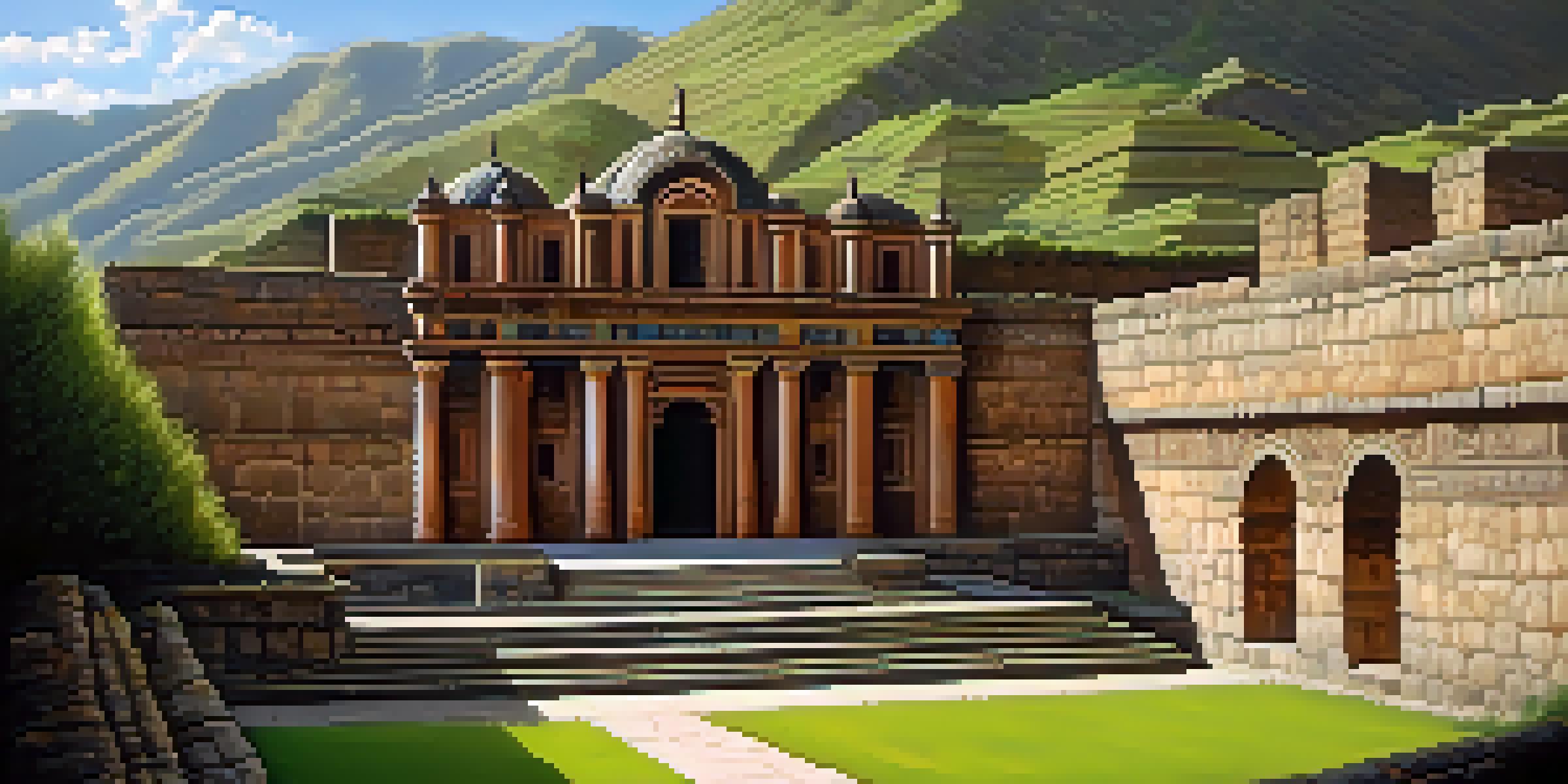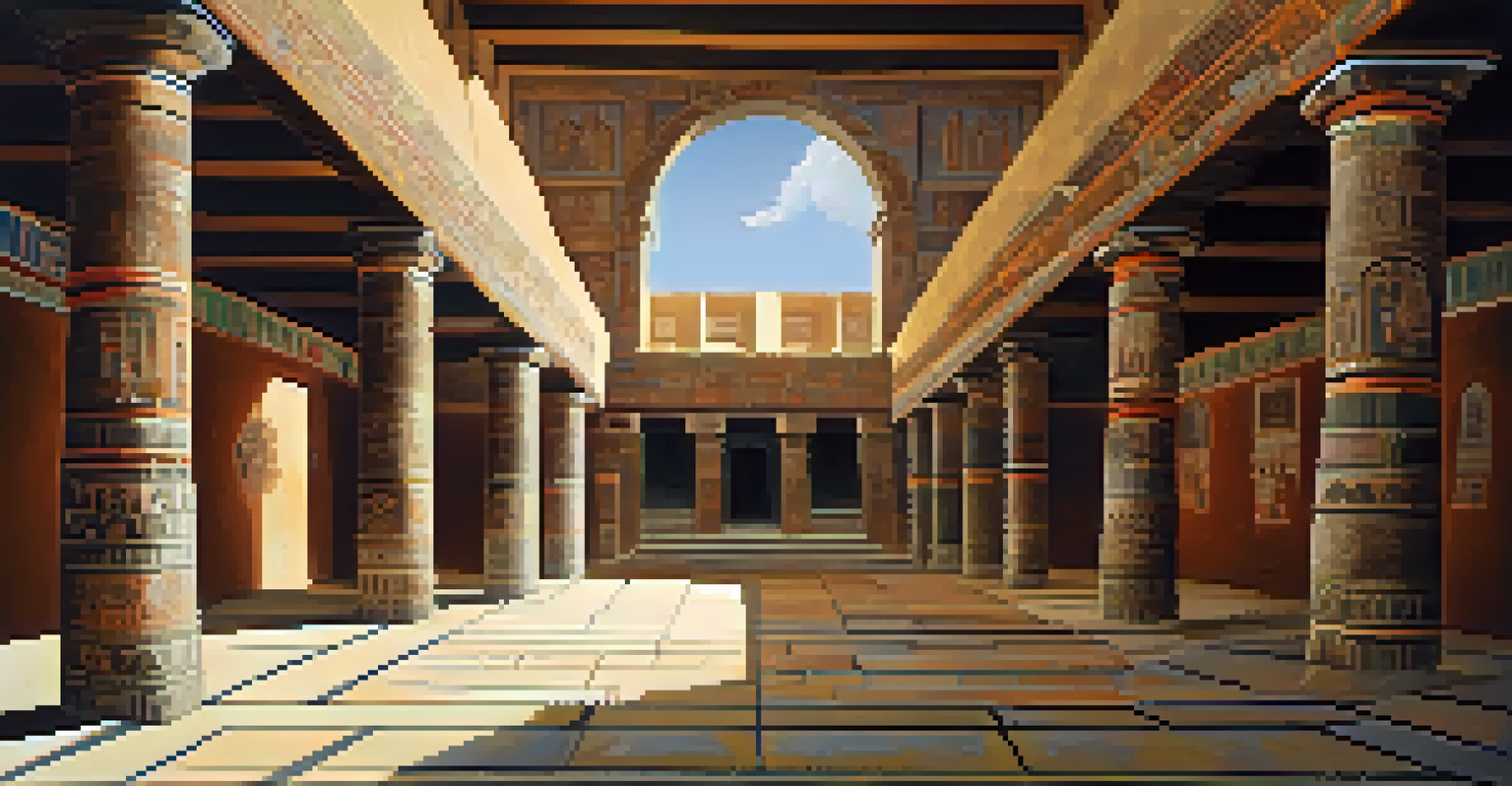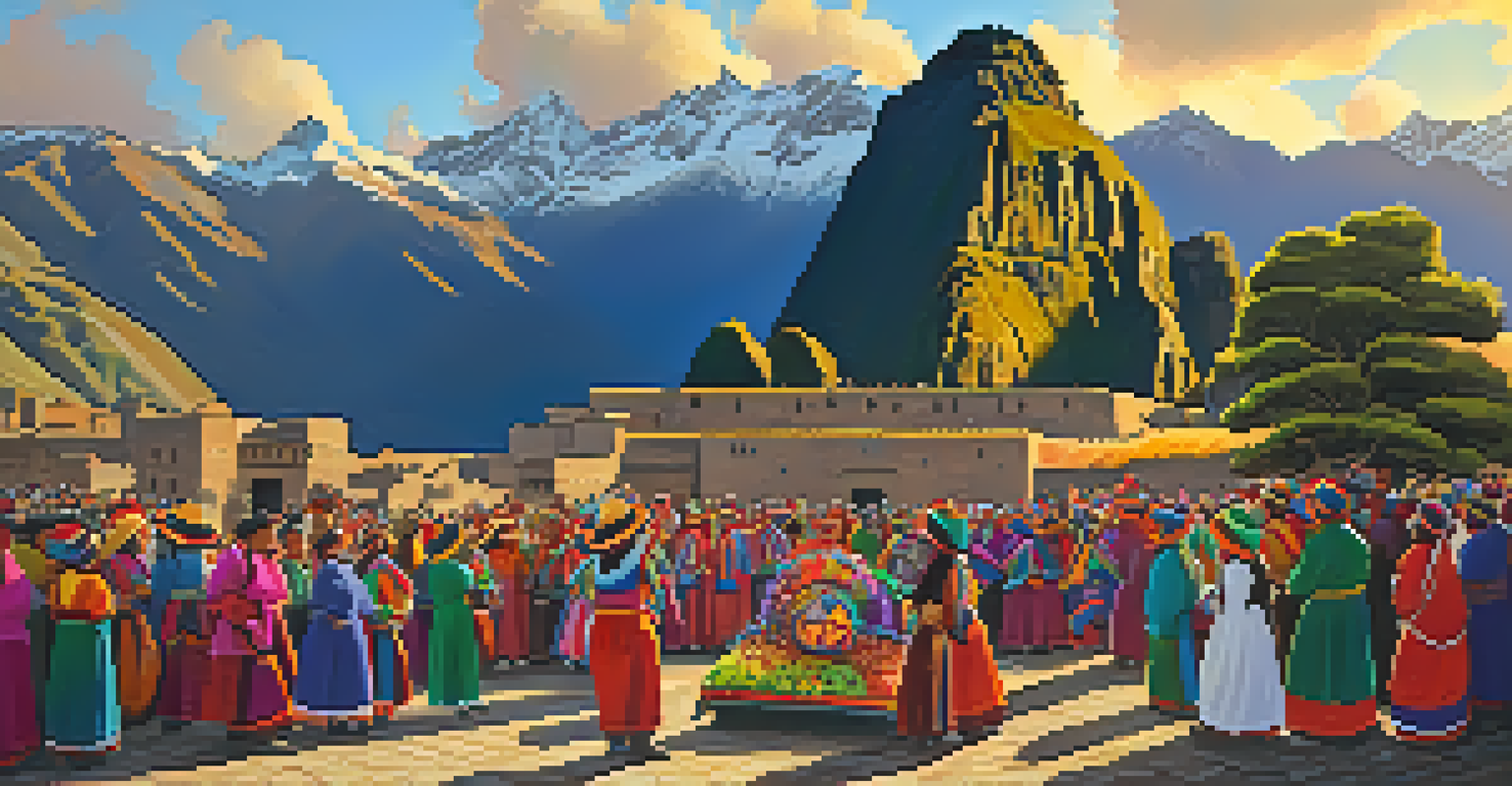Qorikancha: The Temple of the Sun and Its Modern Reverence

An Introduction to Qorikancha: The Temple of the Sun
Qorikancha, often referred to as the Temple of the Sun, is a remarkable piece of Incan architecture located in Cusco, Peru. Built in the 15th century, it was dedicated to Inti, the sun god, reflecting the Incas’ deep reverence for the sun’s life-giving powers. The temple was not only a religious center but also a hub of astronomical observation and agricultural rituals.
In every work of art the spirit of the age is reflected, and Qorikancha is no exception; it embodies the rich tapestry of Incan culture and their reverence for the sun.
As you step into Qorikancha, you're greeted by its stunning stone walls, crafted with precision that has withstood centuries of natural disasters. The original temple was adorned with gold, believed to represent the sun's radiant energy, and was a focal point for worship and offerings. Today, remnants of this glorious past serve as a testament to the Incas' advanced engineering and spiritual practices.
In modern times, Qorikancha has evolved into a significant cultural landmark, attracting visitors from around the world. It stands as a symbol of the fusion between Incan and colonial influences, making it a unique site to explore both history and spirituality.
The Historical Significance of Qorikancha
Historically, Qorikancha was the most important temple in the Inca Empire, revered for its architectural grandeur and spiritual significance. The temple complex included various shrines dedicated to different deities, with the Sun Temple being the centerpiece. Its walls were originally covered with sheets of gold, showcasing the Incas’ wealth and devotion.

The site was destroyed by Spanish conquistadors in the 16th century, who repurposed its stones to build the Santo Domingo church. This act symbolizes the clash of cultures and the transformative impact of colonialism on indigenous beliefs. Despite this, the remnants of Qorikancha continue to tell the story of Incan spirituality and resistance.
Qorikancha: A Cultural Landmark
Qorikancha stands as a symbol of the fusion between Incan and colonial influences, attracting visitors to explore its rich historical and spiritual significance.
Today, historians and archaeologists study Qorikancha to better understand the Inca civilization's religious practices and social structures. The temple serves as a reminder of the Incas’ sophisticated understanding of architecture and the divine.
Architectural Marvel: Qorikancha's Design and Structure
Qorikancha is renowned for its impressive construction techniques, featuring precisely cut stones that fit together without mortar. This method, known as ashlar masonry, allowed the structure to remain resilient against earthquakes, a common occurrence in the region. The temple's design reflects a deep understanding of both aesthetics and engineering.
Preservation of cultural heritage is not merely about maintaining structures, but about keeping alive the stories and traditions that shape our identity.
The layout of Qorikancha was meticulously planned, with various chambers and altars that served specific religious purposes. The main hall, dedicated to the sun, was particularly grand, with windows strategically placed to capture sunlight during solstices. This connection to celestial events underscores the Incas' profound relationship with nature.
As you walk through the ruins, it’s easy to feel the energy of the past. The harmony between the natural landscape and architectural design illustrates the Incas' belief in the sacredness of the Earth and its elements.
Qorikancha's Spiritual Legacy in Modern Peru
Despite the changes over the centuries, Qorikancha remains a vital spiritual site for many Peruvians today. It serves as a point of cultural pride, where people connect with their indigenous roots and the rich history of their ancestors. The temple is often visited during traditional festivals that honor Inca deities, blending ancient customs with modern practices.
Visitors to Qorikancha can experience spiritual ceremonies that reflect a deep reverence for nature and the cosmos. Rituals involving offerings to Pachamama, or Mother Earth, highlight the ongoing significance of the temple in contemporary Andean spirituality. This connection fosters a sense of community and continuity among those who cherish their heritage.
Architectural Marvel of the Incas
The temple showcases advanced engineering techniques, such as ashlar masonry, which has allowed it to withstand natural disasters for centuries.
Moreover, Qorikancha has become a focal point for discussions about cultural preservation and the importance of honoring indigenous traditions. The temple symbolizes resilience, reminding us of the rich tapestry of beliefs that shape Peru's identity.
Tourism and Cultural Significance of Qorikancha
As one of Peru's most visited tourist attractions, Qorikancha plays a crucial role in the local economy. Tourists flock to the site to marvel at its historical significance and architectural beauty, contributing to the preservation of local culture. Guided tours often delve into the stories of the Incas, offering insights that enrich the visitor experience.
The influx of tourists has also sparked initiatives aimed at preserving the integrity of Qorikancha and its surroundings. Local organizations work to maintain the site while educating visitors about its importance. This balance between tourism and preservation is vital for ensuring that Qorikancha continues to inspire future generations.
Additionally, the temple serves as a platform for cultural exchange, where visitors can learn about Andean traditions and practices. This interaction fosters mutual respect and understanding, highlighting the significance of preserving indigenous knowledge.
Qorikancha in Art and Literature
Qorikancha has not only influenced architecture but has also inspired artists and writers throughout history. Its majestic presence has been captured in paintings, photography, and literature, portraying the beauty and cultural significance of the temple. Artists often draw on the themes of spirituality and cultural heritage, reflecting the deep connection people have with this iconic site.
In literature, Qorikancha is frequently referenced as a symbol of the Inca civilization's grandeur and the tragic impact of colonialism. These narratives invite readers to explore the complexities of history and identity, sparking discussions about cultural preservation and respect for indigenous traditions. The temple serves as a poignant reminder of the past and an inspiration for future storytelling.
Spiritual Legacy in Modern Peru
Today, Qorikancha continues to serve as a vital spiritual site, connecting Peruvians with their indigenous roots through rituals and cultural celebrations.
Moreover, contemporary artists continue to find inspiration in Qorikancha, using its imagery to convey messages about identity and resilience. This ongoing artistic dialogue underscores the temple’s lasting impact on cultural expression.
Preserving Qorikancha for Future Generations
Preserving Qorikancha is essential not only for historical reasons but also for cultural identity. Various organizations are dedicated to maintaining the site and ensuring that its stories are passed down through generations. These efforts involve conservation projects that protect the temple's structure and promote awareness of its significance.
Community involvement plays a crucial role in these preservation efforts. Local residents participate in initiatives that celebrate their heritage, fostering a sense of ownership and responsibility towards Qorikancha. This grassroots approach empowers individuals to engage with their history and advocate for its preservation.

Looking ahead, the challenge remains to balance tourism with conservation. As interest in Qorikancha grows, it's vital to implement sustainable practices that protect this cultural treasure while allowing people to experience its beauty and significance.